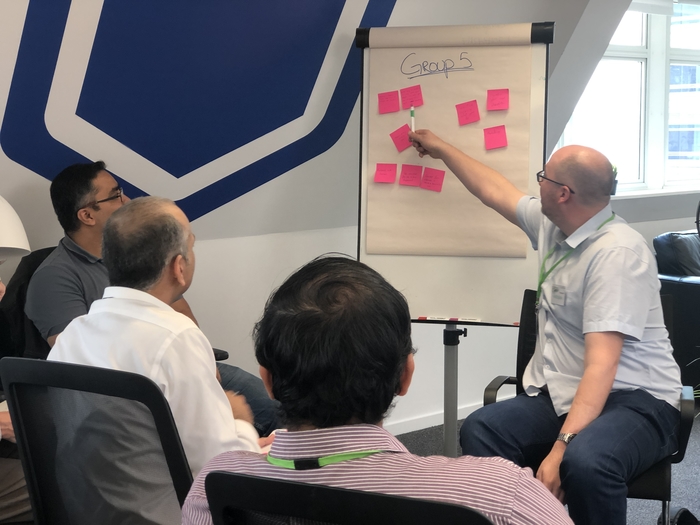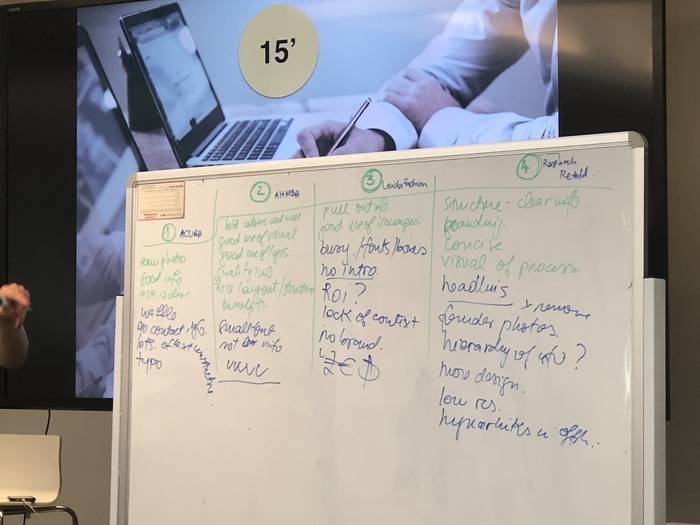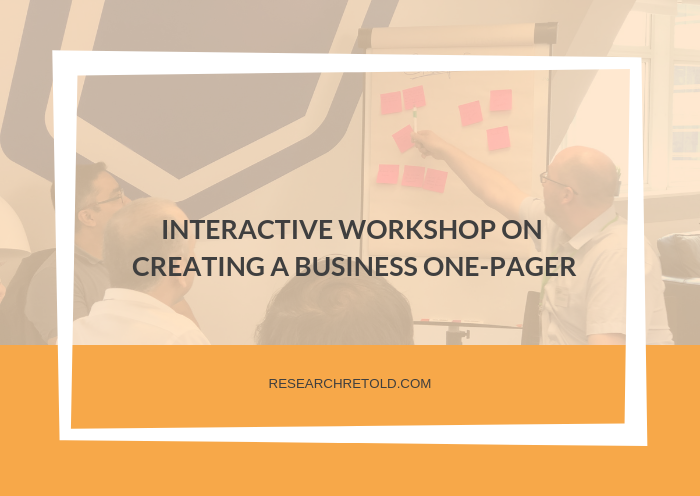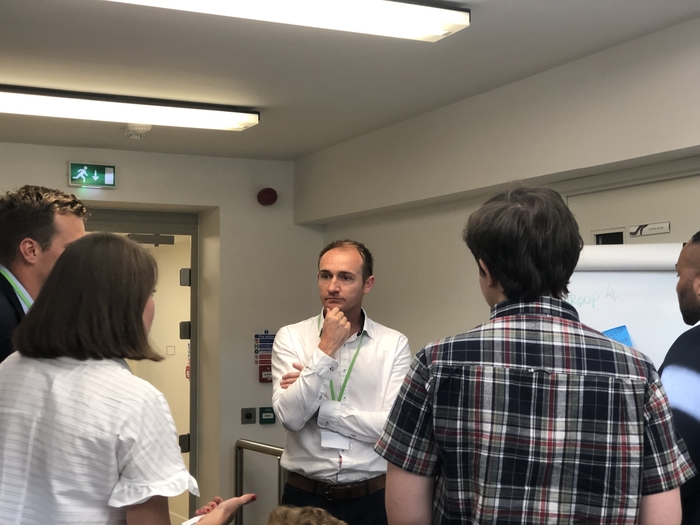In this post we share our experience of delivering a workshop on creating a business one-pager.
This event was part of the HutZero (Cylon) business programme in London on the 20th of August.
Starting something new is never easy. Whether it’s a new product, service or business, we all need a sounding board to check that our ideas make sense to someone else besides ourselves.
As an entrepreneur, I fondly remember the early days of setting up my company: the trepidation of whether this was going to work, the questions about my market, business model, and customers; how my ideas were going to pan out in real life; and whether anyone would be willing to pay for our research communication service. All of these uncertainties and more were a source of both doubt and excitement.
Beyond these internal thoughts, it can be easy in the early days to get feedback from everyone and anyone. People are generally happy to offer advice but it’s important to make sure those insights come from people who have knowledge about your business area of interest. One useful tool to quieten worries and qualify external advice lies in the business one-pager.
A one-pager is a simple one-page document that gives a high-level overview of a product, service, or business. Having this at hand can be crucial in the early discovery stages of a startup.
This month I was invited by the CyLon team to deliver a workshop titled ‘Boil it down: Creating your business one-pager’. The event was part of their HutZero programme.
Funded by the Department of Digital, Culture, Media and Sport (DCMS), HutZero is an intensive five-day boot camp, jam-packed with workshops on technical development, business fundamentals and team building, aimed at helping individuals start their entrepreneurial journey towards building a cyber startup.
The programme is completely free, and anyone with an interest in cybersecurity innovation at any stage of their career can apply. The workshop we delivered in August was attended by 20 people and took place in London.
The aim of the workshop was to introduce the one-pager concept to the participants and to give them the opportunity to implement the learning into practice.
Structure of our workshop on creating a business one-pager
The 1.5-hour workshop was structured into three main parts. At each point, there were opportunities for interactivity and reflection.
Part 1: Definition and Introduction
To kick off the session we talked about what a one-pager is and why it is useful. In my experience as a facilitator, it’s always good to get people to share their views in the first minutes of the workshop. Sharing one simple word or one reason why they find the topic important creates ‘buy-in’ as people are more invested and open to learning new ideas.
Having had the chance to reflect on how the one-pager would come in handy for their entrepreneurial journeys, we also took rounds in sharing one word to describe what a one-pager should be. For this, we all agreed on words like ‘accessible’, ‘straightforward’, ‘informative’, ‘engaging’, ‘concise’, ‘compelling’ and ‘jargon-free’.

Part 2: Criticise and Evaluate
In the second part of the workshop, we learned about the ‘ingredients’ of a one-pager. To bring this to life, I had prepared 4 one-pagers and asked people to work in groups to critique and evaluate them. Of the 4 documents, 2 were fictional and 2 were real.
Since I value feedback and am always keen to improve, one of the one-pagers I offered up for critique was Research Retold’s. This was a learning opportunity for us and it helped us improve the quality of our one-pager.
For instance, in one of the sections about our market, we provide a source for the statistic we use, but only say ‘(source)’ with a hyperlink. In this session, someone pointed out that when the one-pager is printed, people can’t click on the source – so it would be best to actually name the reference, in our case, the Higher Education Statistics Agency.
To complete the exercise, the participants were asked to first identify the aspects they liked about the one-pagers, and then to highlight what didn’t work or needed improvement.

Part 3: Start Creating Your One-Pager
Finally, in the last part of the workshop, the participants were separated into groups and invited to create a one-pager per group. To make the exercise more manageable, the first task was to think about the first sections of the one-pager:
- Description
- Problem
- Solution
- Mission
- Market
This was followed by a moment of reflection, where participants shared how difficult it was to get clarity on their own problems and solutions. From this, they moved on to the next aspects of the one-pager:
- Business Model
- Traction
- Competition
- Team
- Fundraising details
- Contact
Feedback from participants
Overall, the interactive nature of our workshop on creating a business one-pager gave participants an opportunity to act on their learning and get clarity on their business. After the session, we received positive feedback and we’re pleased that the session was useful for the entrepreneurs.
Had a great training session from @ResearchRetold …. a company that makes complex things simple
— RN (@rnakram) August 20, 2019
For a sneak peek into the atmosphere on the day you can watch this short video:
Many thanks to Joanna Wlaźlak, Head of Operations at CyLon, for the invitation.

